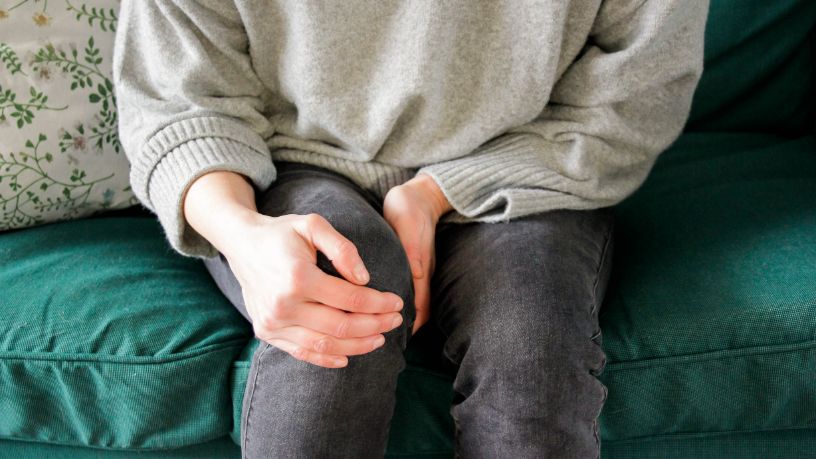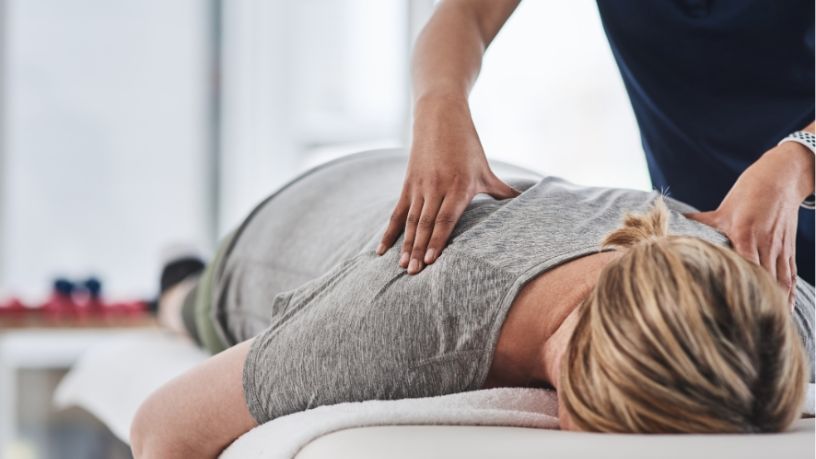On this page
Key takeaways
- Joint pain is common and can be caused by injury, sprains or more serious conditions
- Mild joint pain may be treated with lifestyle changes such as exercise and diet
- Speak to your doctor if your joint pain is severe or persistent.
Aches and pains in your joints as you get older are common, but they can also be frustrating, especially when they start interfering with your daily life.
While you can’t stop the ageing process, there are ways to help ease joint pain naturally and stay moving well for longer.
Bupa physiotherapist Carly Stewart shares some tips on how lifestyle, diet and gentle movement can help and when you should speak to a health professional.
What is joint pain?
Joint pain1 is any discomfort that happens in the joint where 2 bones meet.
It can be caused by swelling in the joint, strenuous activity or exercise or musculoskeletal conditions such as arthritis.
Other causes of joint pain include sprains, chronic conditions such as tendonitis, fibromyalgia and bursitis and some serious diseases such as bone cancer.
Can I prevent joint pain from happening?
Movement is medicine and staying active through regular exercise helps keep muscles strong and joints lubricated, thereby staving off pain and injury.
Need help managing aches and pains?
When should I see a doctor for joint pain?
Most of the time joint pain is mild and can be treated naturally at home.
However, joint pain can be a sign of something more serious.
You should see a doctor for joint pain if you also have:
- Sudden or persistent swelling in the joint
- Redness
- Heat coming from the joint
- A fever
You should also seek medical advice if you cannot use the joint, if the joint looks misshapen or if the pain is severe.
Natural relief for joint pain
Supplements for joint pain
While they may not work for everyone, taking supplements to support joint health or treat joint pain is low risk.
There is evidence that supplements can lead to small improvements in joint pain for people with conditions such as arthritis.2
Glucosamine and chondroitin may help relieve pain and stiffness caused by osteoarthristis3 whereas omega-3 fatty acids found in fish oil supplements may help reduce inflammation in those with rheumatoid arthritis.4
It’s worth doing some research before spending a lot of money, says Carly.
“For most people, the evidence for joint supplements, such as glucosamine or collagen, is mixed. They may help, but they aren’t a magic fix.”
“A well-balanced diet rich in nutrients, combined with regular activity, is usually more impactful. If you’re considering supplements, it’s best to discuss them with your doctor or physio.”
Get chemist delivery
Bupa health insurance members can have prescriptions filled by local chemists and get them delivered to their door by registered couriers. You can also order over-the-counter goods. Delivery address must be within 8km of a participating pharmacy.
Exercise for joint pain
Staying active5 with joint pain can help relieve the severity of your discomfort.
Even mild or gentle movement, such as walking or tai chi, can help strengthen the muscles around the joints, improve balance and ease tension.
“Gentle, low-impact exercises are fantastic,” says Carly. “Walking, swimming, cycling and Pilates or yoga can all help maintain mobility without excessive stress.”
These kinds of low impact exercises can help to increase energy, maintain a healthy weight and support your heart and lung health, all important for general overall health.
Building muscle and strength using weight machine or resistance bands can also help relieve joint pain.
Strengthening exercises, particularly for the muscles around painful joints, are key to improving support and reducing discomfort.
Try using a heat pack on your sore joints before exercise and an ice pack after exercise. The heat can relax the muscles around the joint and the ice can help reduce any swelling.
Always speak to your healthcare team before starting any new exercise or activity.
Foods to help with joint pain
The Arthritis Foundation6 recommends following a Mediterranean style diet to help with joint pain as it may help to maintain a healthy weight, reduce inflammation and support overall good health.
Some foods to include are nuts and seeds, fish, beans, olive oil, whole grains and fruit and vegetables.
“A diet rich in anti-inflammatory foods can support joint health,” says Carly. “Think colourful fruits and vegetables and omega-3 rich fish like salmon. Reducing processed foods and excess sugar is also helpful.”
Medication
“Short-term use of anti-inflammatories [such as ibuprofen] can be helpful for managing flare-ups, but they’re not a long-term solution as they don’t address the cause,” says Carly.
“Follow your GP’s advice on how often and how long to take any pain relief and ask a physio how you can work on the root issues to reduce reliance on medication.”
Book online doctors
Access online doctors for simple medical health needs like requesting a prescription, asking for a medical certificate, or medical advice that may not need a physical consultation. Available to eligible Bupa members.
In an emergency, call 000.

At Bupa, trust is everything
Our health and wellbeing information is regularly reviewed and maintained by a team of healthcare experts, to ensure its relevancy and accuracy. Everyone's health journey is unique and health outcomes vary from person to person.
This content is not a replacement for personalised and specific medical, healthcare, or other professional advice. If you have concerns about your health, see your doctor or other health professional.
1Mayo Clinic. (2025). Joint pain. Mayo Foundation for Medical Education and Research (MFMER).
2Liu, X., Machado, G. C., Eyles, J. P., Ravi, V., & Hunter, D. J. (2018). Dietary supplements for treating osteoarthritis: a systematic review and meta-analysis. British journal of sports medicine.
3Arthritis Foundation. Glucosamine and chondroitin for osteoarthritis pain.
4Arthritis Australia. (2024). Fish oils.
5Mayo Clinic. (2023). Exercise helps ease arthritis pain and stiffness. Mayo Foundation for Medical Education and Research (MFMER).
6Arthritis Foundation. The ultimate arthritis diet.
You might also like
5 types of knee pain
Knee pain can occur in multiple parts of your knee, or in localised areas. Learn about the different types of knee pain.
Understanding back pain: Causes, symptoms and treatment options
Learn what causes back pain, how to recognise symptoms, and your options for relief.
Frozen shoulder: Symptoms, causes and treatments
Frozen shoulder is a condition where your shoulder becomes painful and stiff. Taking painkillers and doing exercises can help ease your symptoms.
Rotator cuff injury: Symptoms, causes and treatment
Learn about rotator cuff injuries, symptoms, diagnosis and treatment options. Discover how to manage shoulder pain with tips from Bupa.





